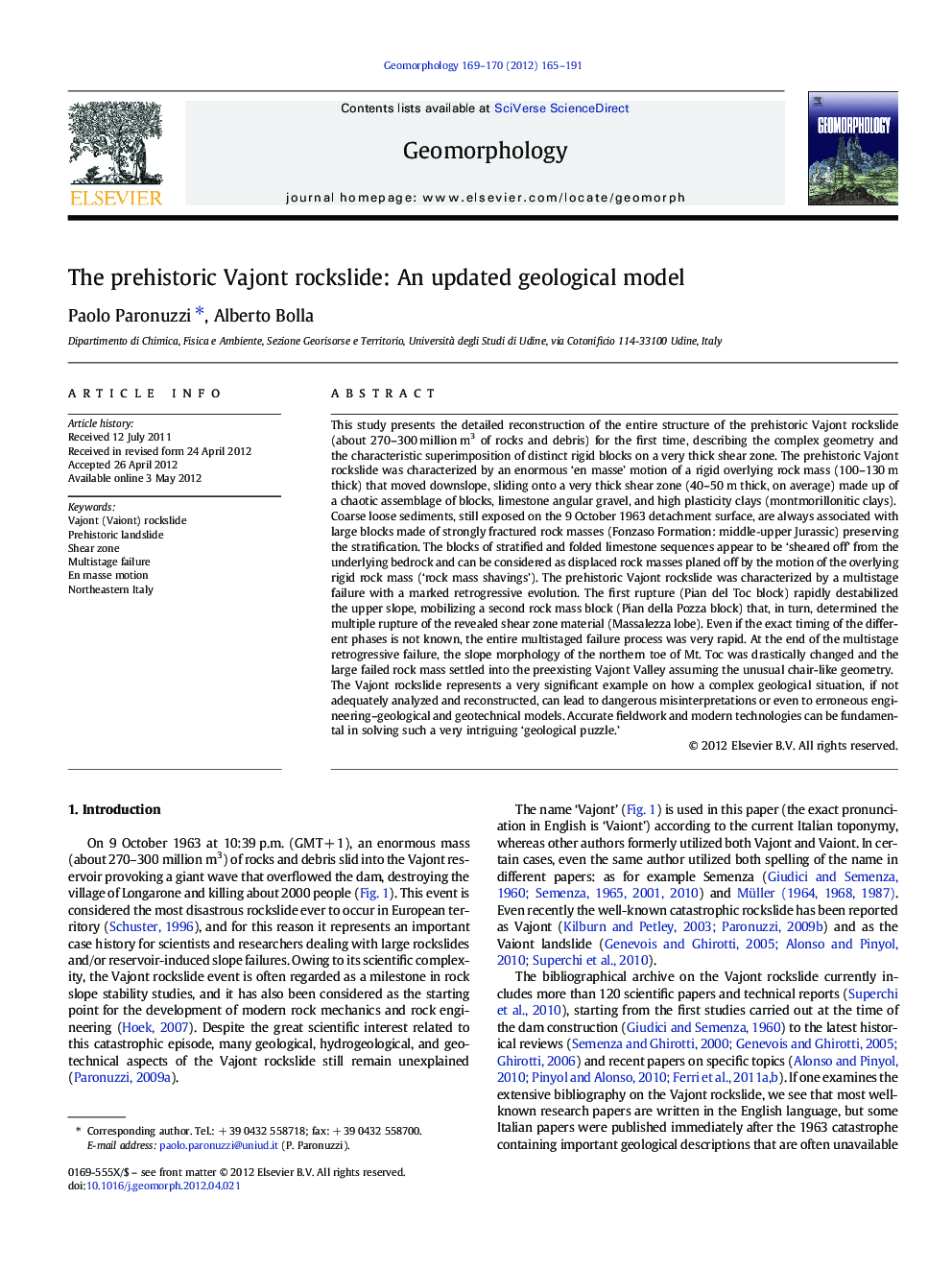| کد مقاله | کد نشریه | سال انتشار | مقاله انگلیسی | نسخه تمام متن |
|---|---|---|---|---|
| 4685108 | 1635474 | 2012 | 27 صفحه PDF | دانلود رایگان |

This study presents the detailed reconstruction of the entire structure of the prehistoric Vajont rockslide (about 270–300 million m3 of rocks and debris) for the first time, describing the complex geometry and the characteristic superimposition of distinct rigid blocks on a very thick shear zone. The prehistoric Vajont rockslide was characterized by an enormous ‘en masse’ motion of a rigid overlying rock mass (100–130 m thick) that moved downslope, sliding onto a very thick shear zone (40–50 m thick, on average) made up of a chaotic assemblage of blocks, limestone angular gravel, and high plasticity clays (montmorillonitic clays).Coarse loose sediments, still exposed on the 9 October 1963 detachment surface, are always associated with large blocks made of strongly fractured rock masses (Fonzaso Formation: middle‐upper Jurassic) preserving the stratification. The blocks of stratified and folded limestone sequences appear to be ‘sheared off’ from the underlying bedrock and can be considered as displaced rock masses planed off by the motion of the overlying rigid rock mass (‘rock mass shavings’). The prehistoric Vajont rockslide was characterized by a multistage failure with a marked retrogressive evolution. The first rupture (Pian del Toc block) rapidly destabilized the upper slope, mobilizing a second rock mass block (Pian della Pozza block) that, in turn, determined the multiple rupture of the revealed shear zone material (Massalezza lobe). Even if the exact timing of the different phases is not known, the entire multistaged failure process was very rapid. At the end of the multistage retrogressive failure, the slope morphology of the northern toe of Mt. Toc was drastically changed and the large failed rock mass settled into the preexisting Vajont Valley assuming the unusual chair-like geometry.The Vajont rockslide represents a very significant example on how a complex geological situation, if not adequately analyzed and reconstructed, can lead to dangerous misinterpretations or even to erroneous engineering–geological and geotechnical models. Accurate fieldwork and modern technologies can be fundamental in solving such a very intriguing ‘geological puzzle.’
► Previous geological studies on the prehistoric Vajont rockslide have been reviewed.
► A new geological survey of the detachment surface has been performed.
► A thick shear zone has been recognized at the base of the prehistoric rockslide.
► A multistage failure and a retrogressive evolution characterized the prehistoric slide.
► The prehistoric slide has been dated to the late Pleistocene–early Holocene period.
Journal: Geomorphology - Volumes 169–170, 1 October 2012, Pages 165–191